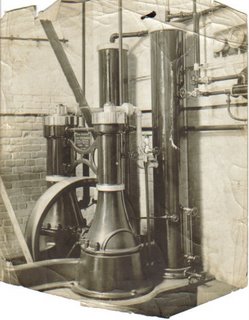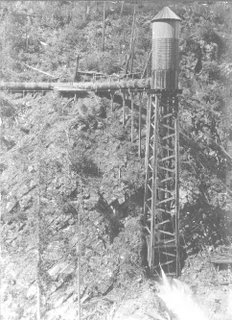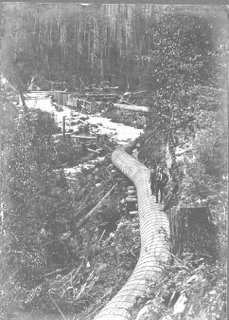
1895 to 1914 From the Smallest Observation Came a Great Invention
In 1895 while building a dam in Buckingham Quebec Taylor noticed that air bubbles that were trapped in the water as it flowed over the spillway were carried under the ice and formed ice domes. When he broke one of the domes with a pipe he realized that the air was pressurized. Insignificant as this may appear to some, Taylor's mind was quick to grasp the industrial possibilities of this phenomenon. He made a working model of a compressor in a warehouse in Montreal. Glass tubing was integrated int the model so that all could see the operation of the machine and as experiments progressed modifications could be made to enhance efficiency.
Charles courted prominent businessmen from the period and, after a demonstration of the models ability to generate compressed air, he was able to build the first of his Air Plants with monies obtained from the investors and the Taylor Air Compressor Company was started.
The first plant to be built was at Magog Quebec for the Dominion Cottom Mills (later to become dominion Textile). It was a 155 horsepower compressor delivering air at 52 lbs. per sq. inch. It was 60% efficient and was still in operation in 1953. It was not untill the mid 1970's that an engineer from the US advised Dominion Textile to upgrade their weaving equipment rendering the compressor obsolete.

Then in 1898, at Ainsworth B.C., he organized the Kootney Air Supply Company and built a 600 H.P. compressor supplying air at 100 p.s.i. this required the construction of a 1354 foot closed wooden flume to develope enough water pressure. It was intended to supply the Kaslo Mining Co., a new copper mine.
The Great Northern Railroad did not build its promised spur line to the mine and so the compressor closed down. Taylor paid the $60,000 dolar construction costs to the financial backers out of his own pocket. This was a severe setback to his plans.
An order from the Dominion Government for a 45 H.P. compressor for the Peterborough Lift lock on the Severn Trent waterway in 1899 helped the company out.


It is interesting that you report that the design did not originate from earlier trompe compressors / water-bellows.
ReplyDeleteThe Ragged Chutes compressed air plant is mentioned in a 1977 article in Mother Earth News.
This type of compressor is mentioned in Appleton's' Cyclopedia of Applied Mechanics, which is published on a web page. The date of this edition is not immediately clear but probably preceeds 1880.
The section entitled I. Low Pressure Compressors. C. Compressors without Pistons is on this page. "Water-Apparatus ... in which the compression is produced by the entrainment of the air by means of a liquid vein escaping under a given pressure. ... To this class belongs the well-known water-bellows or trompe of the Catalan forges."
Text is quoted from other early sources in this blog entry
I was interested in water trompes of the catalan forges. Nowadays, lots of ancient books are being digitalized. A very interesting book about Hydraulic Air compressors is:
ReplyDeleteSchulze, Leroy E. "Hydraulic Air COmpressors" US Departament of interior, Circular 7683, May 1954.
Available on-line:
http://hdl.handle.net/2027/mdp.39015078460238